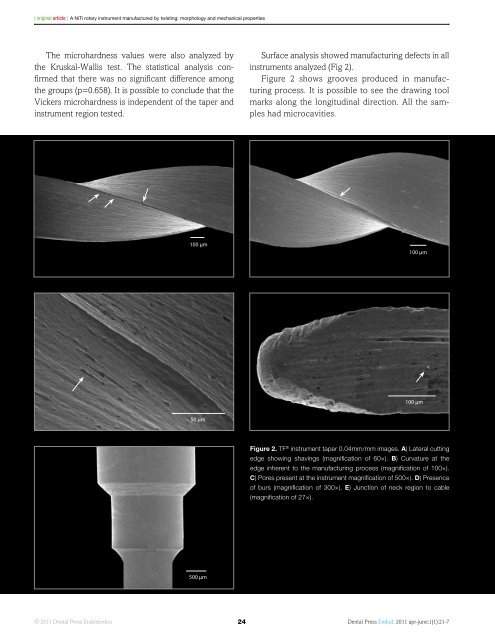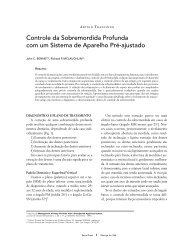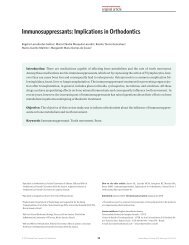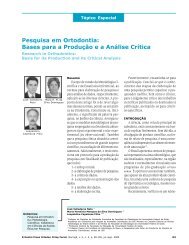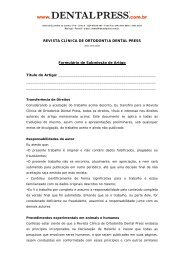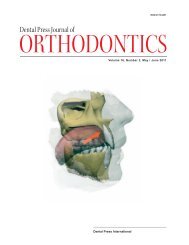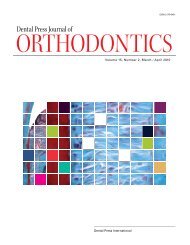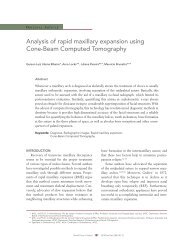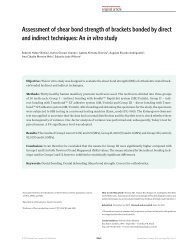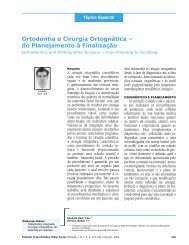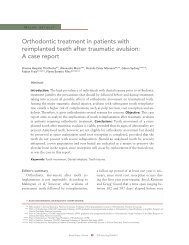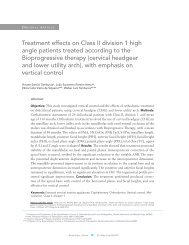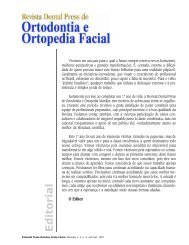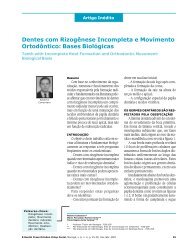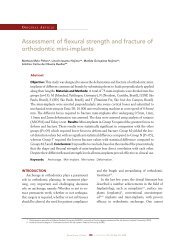Dental Press
Dental Press
Dental Press
You also want an ePaper? Increase the reach of your titles
YUMPU automatically turns print PDFs into web optimized ePapers that Google loves.
[ original article ] A NiTi rotary instrument manufactured by twisting: morphology and mechanical properties<br />
The microhardness values were also analyzed by<br />
the Kruskal-Wallis test. The statistical analysis confirmed<br />
that there was no significant difference among<br />
the groups (p=0.658). It is possible to conclude that the<br />
Vickers microhardness is independent of the taper and<br />
instrument region tested.<br />
Surface analysis showed manufacturing defects in all<br />
instruments analyzed (Fig 2).<br />
Figure 2 shows grooves produced in manufacturing<br />
process. It is possible to see the drawing tool<br />
marks along the longitudinal direction. All the samples<br />
had microcavities.<br />
100 µm<br />
100 µm<br />
100 µm<br />
50 µm<br />
Figure 2. TF ® instrument taper 0.04mm/mm images. A) Lateral cutting<br />
edge showing shavings (magnification of 60×). B) Curvature at the<br />
edge inherent to the manufacturing process (magnification of 100×).<br />
C) Pores present at the instrument magnification of 500×). D) Presence<br />
of burs (magnification of 300×). E) Junction of neck region to cable<br />
(magnification of 27×).<br />
500 µm<br />
© 2011 <strong>Dental</strong> <strong>Press</strong> Endodontics 24<br />
<strong>Dental</strong> <strong>Press</strong> Endod. 2011 apr-june;1(1):21-7


